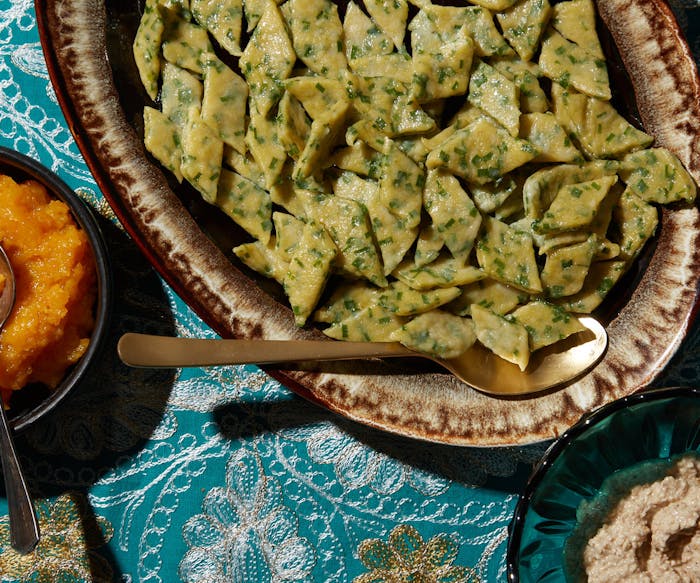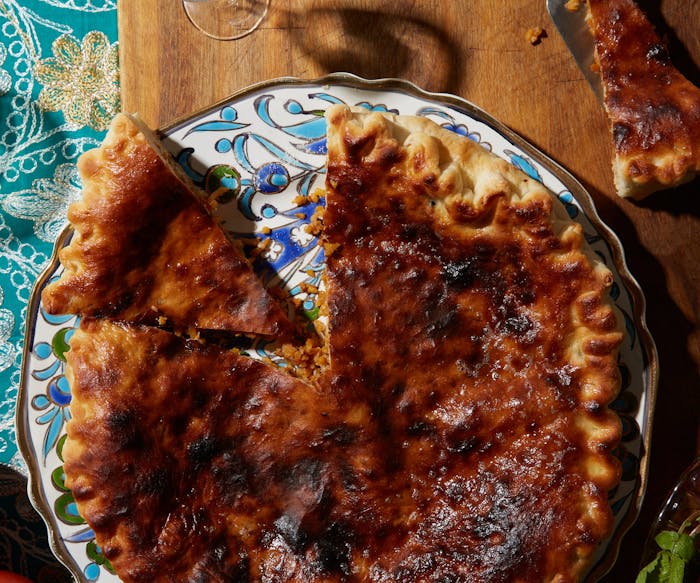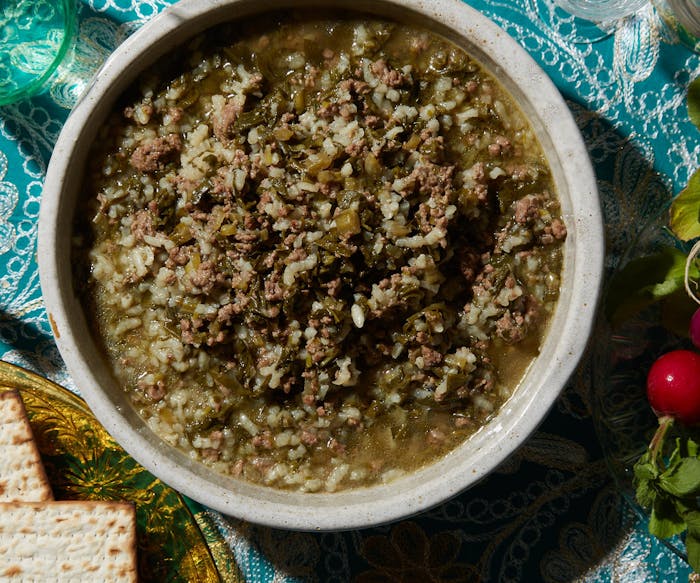Shared by Alona Eisenberg
Kurze (Kavkazi Beef-Filled Dumplings With Garlic Vinegar)
Yield: 2 dozen dumplingsTime: 1h 30minThis recipe was shared by Alona Eisenberg. Read more about her family in "Finding a Route to the Kavkaz Mountains in the Kitchen" and try her recipes for pasta with walnut sauce and flatbread stuffed with pumpkin.
Ingredients
For the dough:
- 1 pound (3⅓ cups) all-purpose flour, plus more for dusting
- 1 teaspoon kosher salt
- 1 large egg, lightly beaten
- 1 to 1¼ cups water
For the filling:
- 2 tablespoons vegetable oil
- 1 large yellow onion, chopped
- 6 tablespoons tomato paste
- 3 tablespoons water
- Kosher salt, to taste
- Freshly ground black pepper, to taste
- 1 pound ground beef
- ¼ bunch cilantro, washed and finely chopped
For the sauce:
- ⅓ cup red wine vinegar
- 3 garlic cloves, very finely chopped
Preparation
Step 1
Make the dough: Combine the flour and salt in a large bowl. Add the egg and 1 cup of the water and mix by hand until an elastic dough forms, 2 to 3 minutes, adding more water if needed. Continue kneading for 1 to 2 minutes until you have a firm, smooth ball of dough. Cover with a damp towel or plastic wrap and let rest for 20 minutes.
Step 2
Make the filling: Heat the oil in a medium skillet over medium heat, add the chopped onion, and sauté until golden, 10 to 12 minutes. Stir in the tomato paste and 3 tablespoons of water and continue cooking for 1 to 2 minutes until slightly thickened. Season with salt and pepper and set aside until cool enough to handle, about 10 minutes.
Step 3
Place the beef and cilantro in a large bowl. Add the onion mixture and mix well with your hands, “kneading” the meat mixture until the filling is evenly combined. Set aside.
Step 4
Make the dumplings: After resting, the dough should be slightly softer and more pliable. Transfer the dough to a lightly floured work surface and roll it out as thinly as possible. Keep turning the dough while rolling so that it doesn’t stick to the surface, using as little flour as possible. Use a 2-inch wide glass or round cookie cutter to cut out as many circles as possible. Gather dough scraps and re-roll, and continue to cut out circles. Cover the dough rounds with a damp cloth.
Step 5
Fill the dumplings: Take a circle of dough and carefully stretch it out in the palm of your hand. Place a heaping tablespoon of the meat mixture in the center of the dough round. Fold the circle in half over the filling, pinching and folding the edges in a Kavkazi braid pattern with your index finger and thumb, making an inward fold from alternating edges of the dough one after the other. Twist and tuck the tail end of the dumpling to firmly seal in the filling so the dumpling doesn’t burst during cooking. If the dough is too dry to stick, brush the edges lightly with water before sealing. Place each dumpling on a wax or parchment paper-lined baking sheet and cover with a towel. Continue filling remaining dough rounds.
Step 6
Cook the dumplings: While filling the dumplings, bring a large pot of generously salted water to a boil over medium-high heat. Gently add half of the dumplings, being careful not to tear them or to overcrowd the pot. Simmer 2 to 3 minutes until the dumplings float to the surface, then continue to cook 2 minutes more. Remove the dumplings with a slotted spoon to a serving dish and return the water to a boil. Repeat with the remaining dumplings.
Step 7
Make the sauce: Combine the vinegar and garlic in a small dish. Serve immediately alongside the hot dumplings. Take a small bite from the end of a dumpling (remember it’s juicy!), then drizzle or spoon the sauce inside and enjoy the next bite.
Step 8
Make ahead:The kurze can be made ahead and placed on a wax or parchment paper-lined tray in the freezer until firm, then transferred to a sealed container or a Ziptop bag. Before cooking, remove the dumplings from the freezer and transfer to a wax or parchment paper-lined tray. Cover with a towel and refrigerate until thawed or ready to use. When boiling, continue to cook for 4 minutes after dumplings float to make sure that the filling is cooked through.


